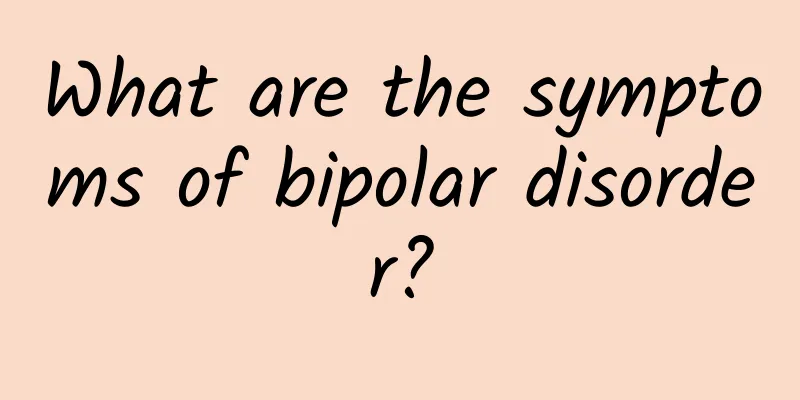How to accurately assess and treat nausea and vomiting during pregnancy

|
Vomiting during pregnancy is one of the most common symptoms in pregnant women. It mainly occurs in the first three months of pregnancy, but for some patients it may last throughout the pregnancy and affect the quality of life. So how should vomiting during pregnancy be treated? Non-drug treatment Dietary modification Dietary modification is the basis of NVP treatment. Eat small meals frequently; light and low-fat; high-protein, low-sugar; liquid diet; drink small amounts of water between meals, and choose drinks containing electrolytes; if hot meals trigger nausea, choose cold meals if necessary. Ginger The American College of Obstetricians and Gynecologists recommends ginger as a non-pharmacological means of treating NVP. A large number of studies have also shown that ginger can be used to improve symptoms and is relatively safe for the fetus; however, because ginger can inhibit platelet function, it is not recommended for patients receiving anticoagulant therapy. Acupressure and acupuncture Studies have shown that pressing or acupuncture on the Neiguan acupoint can relieve nausea and retching; the effect of acupuncture on improving symptoms in pregnant women with HG is comparable to that of metoclopramide and vitamin B12. These data suggest that acupressure and acupuncture may be helpful in the treatment of NVP, but their benefits remain uncertain. Vitamin B1 supplementation It is very meaningful for pregnant women with HG to supplement vitamin B1. Thiamine pyrophosphate is the biologically active form of vitamin B1 and an important coenzyme for various biochemical processes in the brain. The daily requirement of vitamin B1 for women is about 1.1 mg, which can be increased to 1.5 mg during pregnancy. It can be further increased in pregnant women with HG because absorption is affected. Intravenous fluids Pregnant women with HG who are severely dehydrated or even have ketoacidosis are generally recommended to be hospitalized, and immediate rehydration can relieve most symptoms. At the same time, parenteral nutrition and supplementation of vitamins and trace elements can help correct electrolyte imbalances. Adding glucose during fluid replacement can provide energy support. Drug treatment Antihistamines Antihistamines are often used to treat nausea and vomiting during early pregnancy. The first-generation H1 receptor antagonists diphenhydramine, dimenhydrinate, meclizine, and pheniramine can indirectly affect the vestibular system and reduce stimulation of the vomiting center. These antihistamines are all Category B medications for use during pregnancy and have been shown to be effective in controlling NVP symptoms. The American College of Obstetricians and Gynecologists recommends the above drugs alone or in combination with vitamin B6 for the first-line treatment of NVP. In April 2013, the U.S. Food and Drug Administration (FDA) approved Diclegis for the treatment of NVP in pregnant women. It is an extended-release tablet containing 10 mg of doxylamine succinate and 10 mg of vitamin B6 hydrochloride. The most common adverse reaction of this drug is drowsiness. Antiemetics Central and peripheral dopamine antagonists chlorpromazine and prochlorperazine can also alleviate the symptoms of NVP and HG. Both are pregnancy category C medications, used during the first three months of pregnancy when the risk of birth defects is slightly increased. Another phenothiazine drug, promethazine, is also widely used in many countries and regions and is also a Category C medication for pregnancy. Although studies have shown that it has no teratogenic effects, it has anticholesterol effects such as dry mouth, drowsiness, and sedation. Therefore, it can be considered as a second-line treatment for NVP. Benzamides Metoclopramide is a dopamine and 5-hydroxytryptamine receptor antagonist that is widely used in the treatment of NVP. It is a Class B drug for pregnancy and is safe to use, but it has adverse reactions such as drowsiness and dizziness, and long-term use carries the risk of tardive dyskinesia, so it can be considered as a third-line drug for NVP. |
<<: What causes vomiting in newborns? How to care for newborn vomiting?
Recommend
Atrophic gastritis
Nowadays, the pace of life and work is very fast, ...
Uses of medicinal orange
In fact, from the perspective of traditional Chin...
What are the reactions to moxibustion?
Moxibustion has already appeared in ancient times...
Acute renal failure is caused by them
In recent years, the incidence of kidney disease ...
What are the effects and functions of Siegesbeckia sibiricum?
Many people may not know about Siegesbeckia, but ...
Soaking your feet in pepper water can cure gray hair
Sichuan pepper is a common condiment in our lives...
What are the effects and functions of Cordyceps tablets
Cordyceps sinensis has always been considered by ...
The tooth nerve cannot be killed casually
For people with caries or micro-cracks in teeth, ...
What are the symptoms of pregnancy syndrome
Pregnant women are often prone to unexpected and ...
Causes of foot pain
As the old saying goes, the legs age first when p...
Urethra stenosis in boys
The urethral opening is a tube used for urination...
What causes reddish brown stool?
Everyone knows that the color of stool is directl...
Nature, flavor and meridians of Astragalus
As a common and frequently consumed Chinese medic...
Is it easy to gain weight in autumn?
We all know that obesity is very harmful to every...
What is the cause of acne on the face
There are many reasons for facial acne, including...









